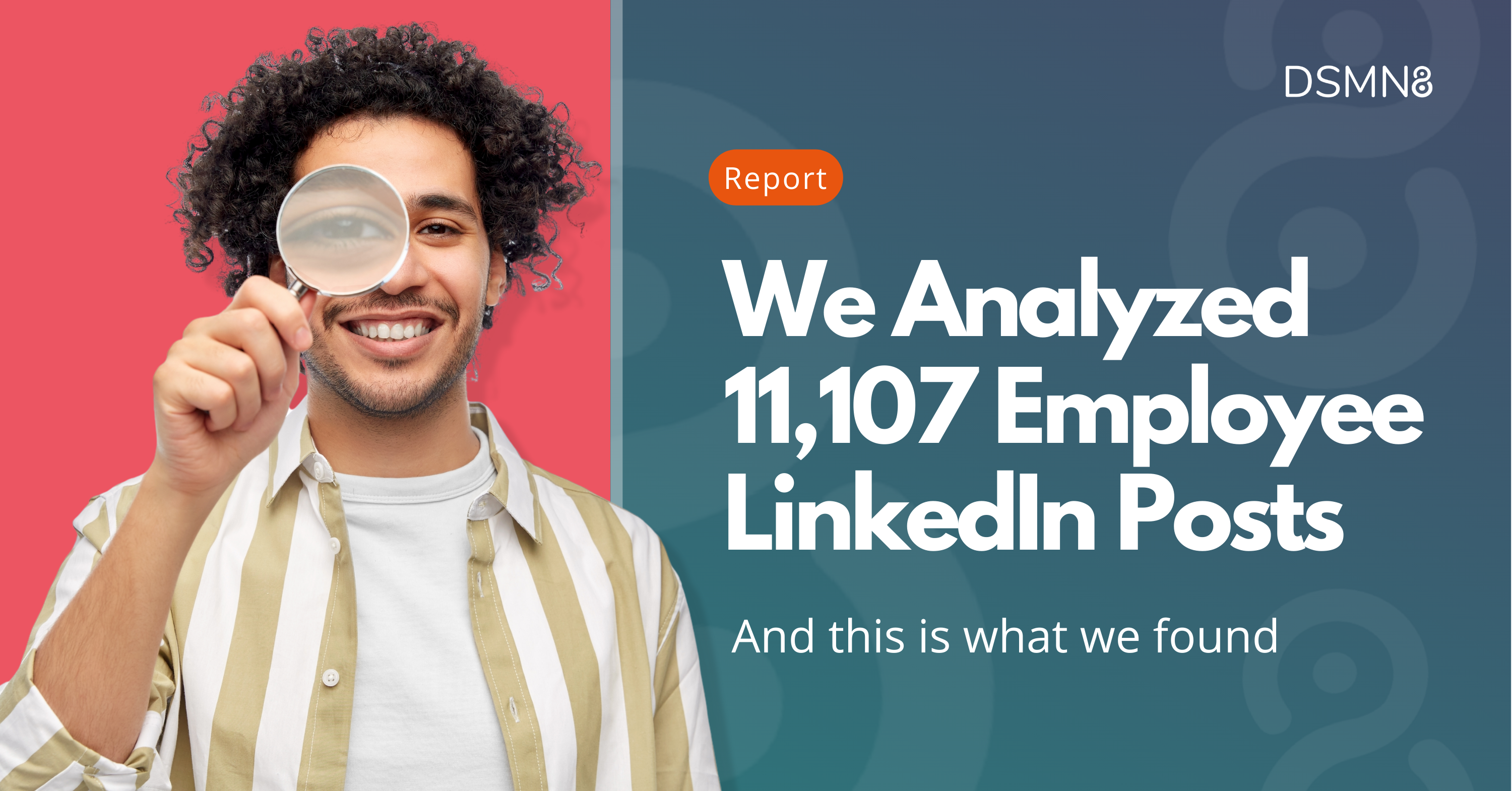
We analyzed over 11 thousand employee LinkedIn posts in 2023, from an enterprise-level organization using DSMN8 to manage their employee advocacy program.
This report presents 10 data-backed findings, and the key takeaways for creating content that drives business results and engages employees.
The results may be surprising to some, as many data points go against the traditional view that advocacy works best in sales and marketing teams!
Why and How We Conducted This Analysis
The goal of this analysis was to discover:
- What content topics and formats resonate best with employees.
- What content types perform best on LinkedIn.
- Which employees and department generate the biggest impact from sharing content.
This particular organization was chosen due to the volume of LinkedIn employee posts, and size of their advocacy program. This provided us with enough data to provide helpful insights for those managing or starting an employee advocacy program.
Industry: Civil Engineering.
Dates: 1st Jan 2023 – 31st Dec 2023.
Data Sources: DSMN8 Platform Analytics and LinkedIn.
The Findings
1) 11,107 LinkedIn posts in 2023 came from 1,903 employee advocates. On average, that’s 5.83 posts per employee.
That average may sound low, but some employees are much more active than others.
Additionally, some advocates are more interested in engaging with company page or your CEO’s content, rather than necessarily sharing content themselves.
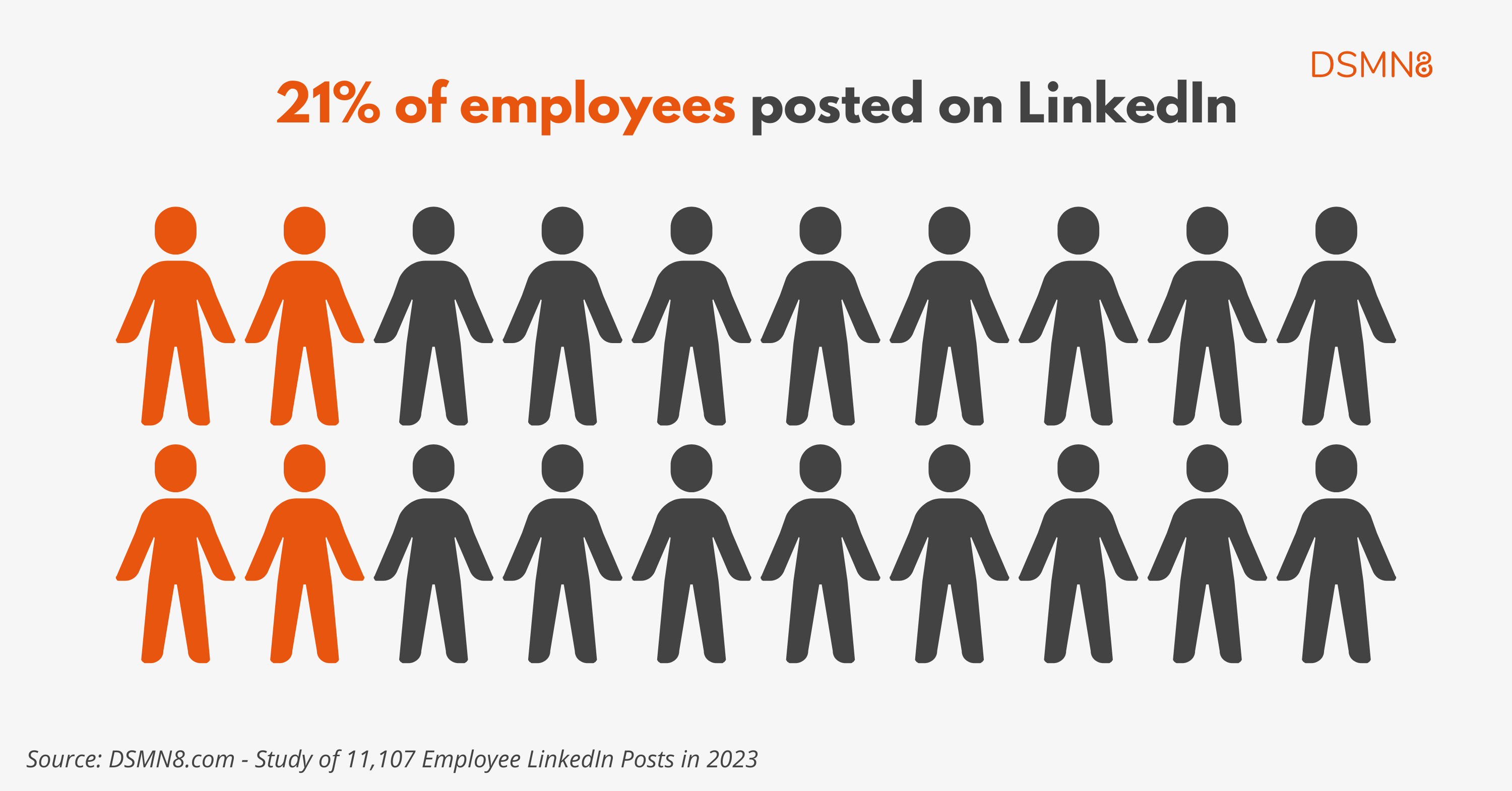
2) 21% of the organization's employees were actively involved in the advocacy program.
You don’t need to invite all employees for a thriving advocacy program. This organization saw success with only 21% of their total employees enrolled.
Be strategic about who to invite first to generate the biggest impact, before onboarding your entire organization.
Use the Pyramid of Employee Influence and Ideal Advocate Profiles Worksheet to discover these individuals.
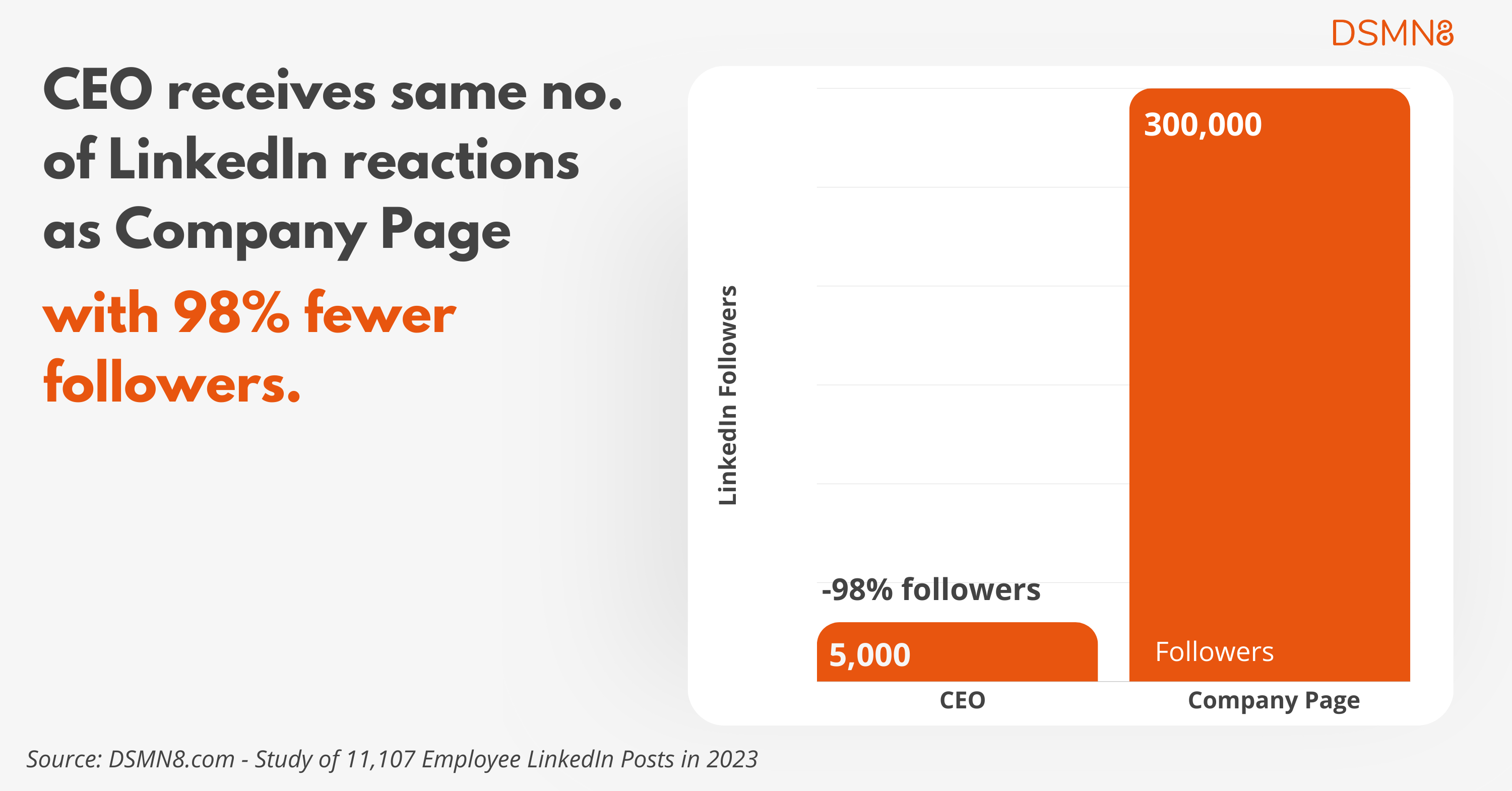
3) The CEO generates the same amount of LinkedIn reactions as the company page… with 1.67% of the followers.
This organization’s CEO has approximately 5,000 followers, compared to 300,000 on the company page (both numbers rounded down to the nearest thousand).
The CEO has around 98% less followers, yet they both generate an average of approximately 300 LinkedIn reactions per post.
From analyzing 10 LinkedIn posts chosen at random from both the Company Page and CEO’s profile, the CEO came out on top, by reaching an average of 321 reactions per post, compared to 306 by the Company Page.
Your CEO has a huge impact on your social media presence.
People are more interested in content by thought leaders on LinkedIn than companies. Plus, LinkedIn’s algorithm is likely to show content by people over company pages.

4) The CEO generated more LinkedIn reactions on their posts than all other employees.
9 out of 10 of the LinkedIn posts with the most reactions were by the CEO.
The remaining post was by an executive director and board member.
If you’re aiming to get employees more active on social media this year, start from the top. Getting leadership buy-in is key for driving results, and it helps encourage employees to get involved.
5) Visual elements are the key to scroll-stopping content on LinkedIn.
All of the top 10 posts with the most LinkedIn reactions included a visual element – an image, video, or a link preview image.
Text-only posts are popular on LinkedIn, but to stop the scroll, consider adding visual elements to your content.
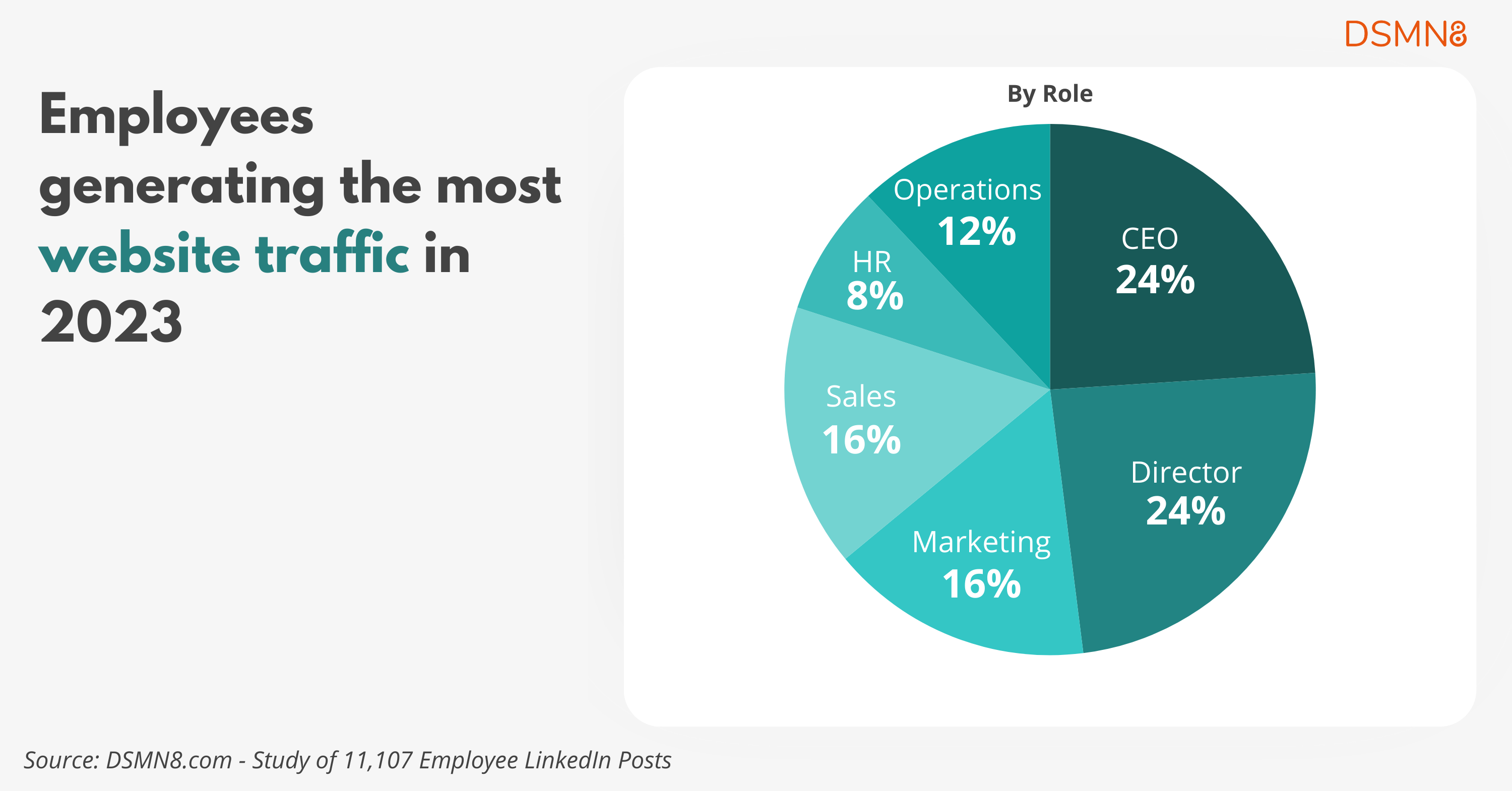
6) Only 4 out of the top 25 posts for website clicks were by the marketing team.
While it makes sense to include your marketing team in an advocacy program, don’t underestimate the impact that other departments can have, from Operations to HR. Employee advocacy isn’t just for marketing!
Executive influence is clear here too: the top post (from the CEO) generated 62% more clicks than the 2nd most clicked post.
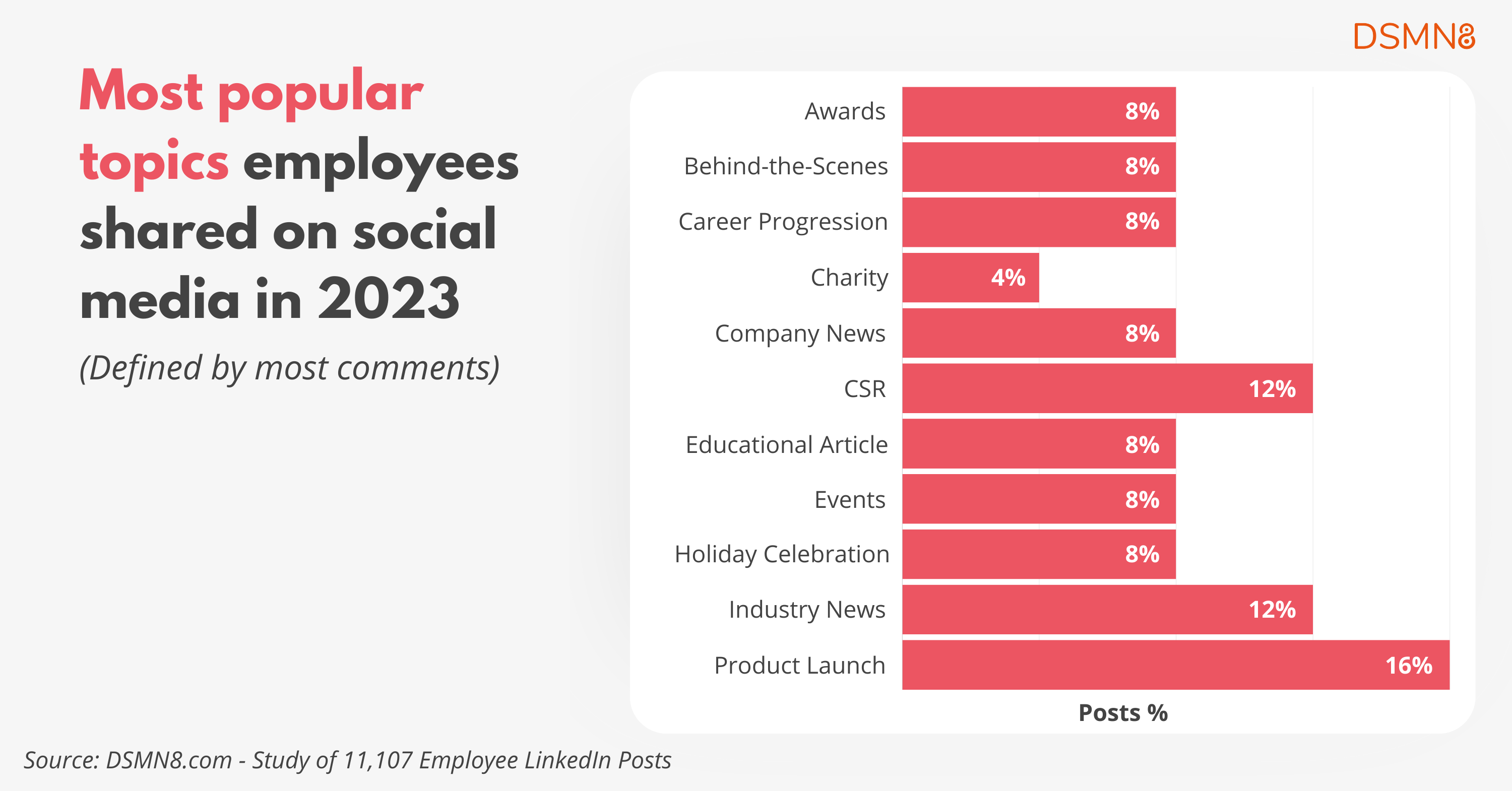
7) For starting conversations in the comments, company culture content dominates.
Company culture content and personal posts generated the most comments overall. These posts include celebrating a promotion or an award, charity and corporate social responsibility, celebrating holidays, and behind-the-scenes content from events.
Only 16% of the top 25 posts were directly related to the organization’s products, 12% related to industry news, and perhaps most surprisingly, only 8% were educational articles.
Empower employees to create original, authentic content about your organization. It generates more impact on LinkedIn, while increasing employee engagement, helping to build a community around your advocacy program.
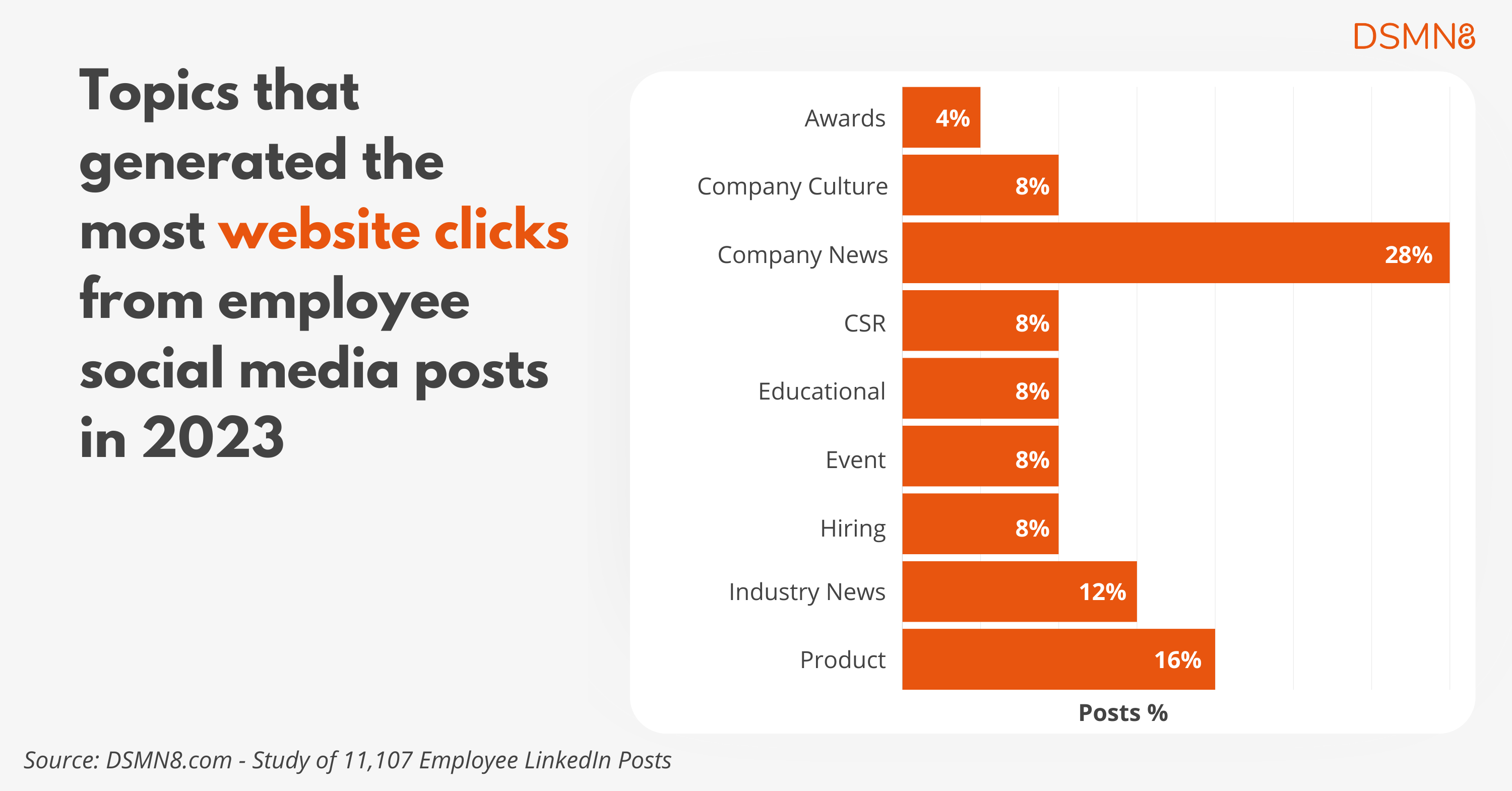
8) Of the Top 25 posts driving website traffic, Company News has the biggest impact
While Company Culture generated the most comments…
Company News generated the most website clicks.
The key takeaway here is to create multiple types of content that align with the different goals for your advocacy program.
Use the Holy Trinity of Content: Company-Centric Content, Company Culture Content, and Third-Party Industry News.

9) The C-Suite drives results, but so do other departments.
Yes, a lot of these data points indicate that CEO’s and other directors have significant influence on LinkedIn.
But for generating comments and starting conversations…
The top 25 posts out of 11,107 revealed that employees across several departments at various levels of seniority had a big impact in 2023:
- HR: 4%
- Customer Success: 4%
- Marketing: 8%
- SDRs / Business Development Reps: 8%
- Engineers: 8%
- Project Managers: 12%
And business development reps accounted for a huge 20% of the top 10 posts.
Be strategic when inviting employees, but don’t be too restrictive. If an employee is keen to participate, embrace it no matter their seniority or department!
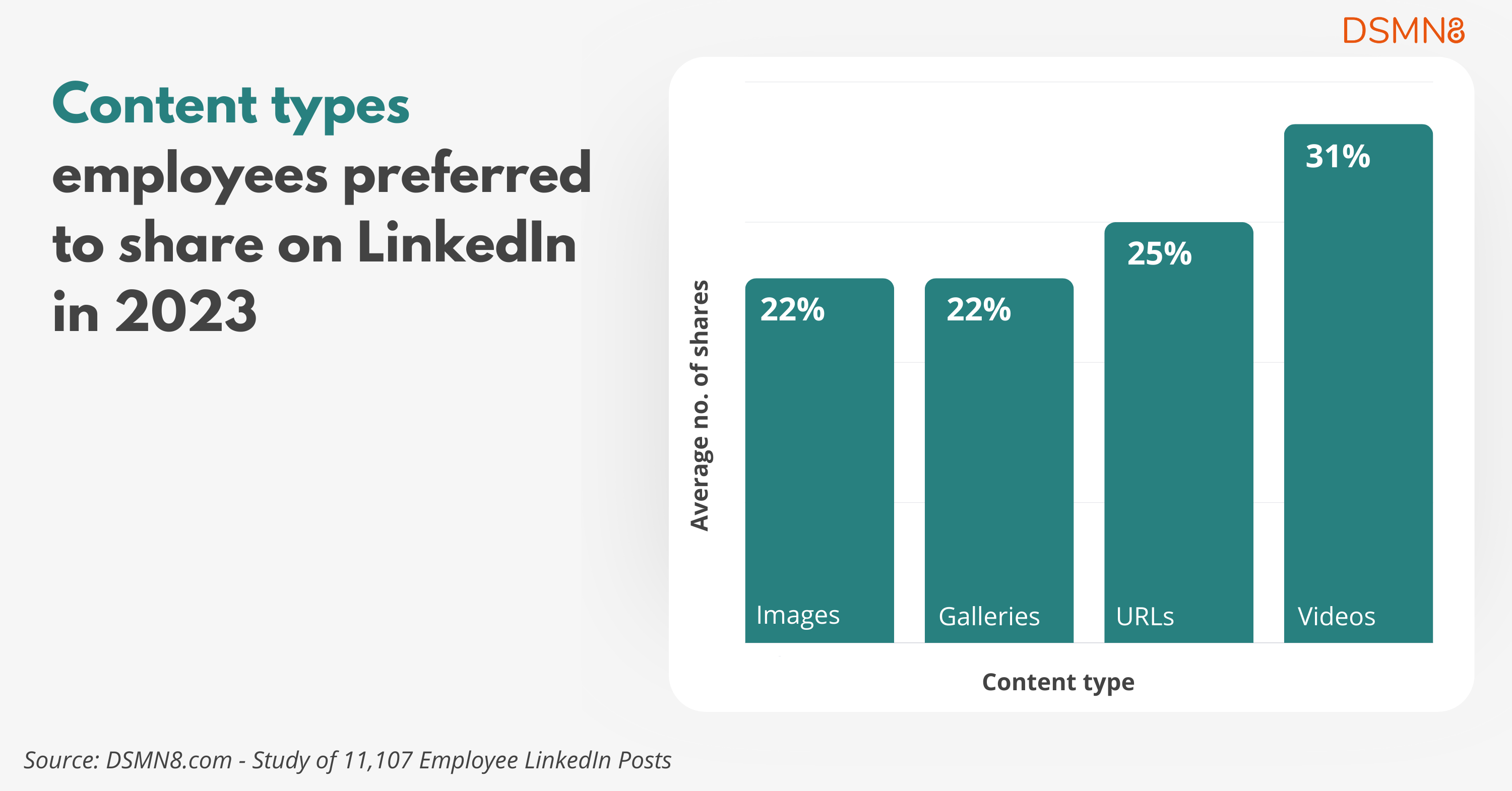
10) Employees are eager to share videos, and their audiences approve.
When analyzing the full 11,107 employee posts by content type…
Each video curated for employees was sharing on average, 18.4 times.
In comparison, images were shared 13.3 times, Galleries (multiple images) 13.4 times, and URLs without images 15.2 times.
Their followers and connections were also most interested in video content.
Video generated the highest average of LinkedIn reactions (231.3 on average) and comments (3.6 on average).
11) 7.44% of engineers shared content, compared to 6.5% of the marketing team.
Engineers accounted for the highest percentage of employees sharing content.
Traditionally, social media content has been seen as a sales and marketing function. However, it’s clear that professionals who aren’t customer-facing are keen to demonstrate their expertise and share industry news on LinkedIn.
Tailoring content for different groups is the best approach to take.
Engineers, for example, are more likely to share educational and informative posts over marketing content.
For HR, the second most engaged group in our data set, company culture content is the priority.
Key Takeaways
1. CEO's wield huge influence on LinkedIn.
Consistently, the CEO outperforms LinkedIn company pages and employees by a long way. Getting your executives active on social should be a priority.
2. Employee advocacy isn't just for sales and marketing.
HR and engineering employees were among the most active, and most engaged with on LinkedIn.
3. Introduce video to your LinkedIn content strategy.
Not only was it the most popular format for employees to share, but videos also generated the highest average number of reactions and comments.
4. For community building, company culture content is key.
For community building, increased engagement and encouraging comments, employee-generated content makes a huge difference. From awards and celebrating promotions to sharing behind-the-scenes photos from events, company culture content dominated the top 25 most commented on LinkedIn posts.
Additional Resources
- Employee Advocacy: 101 Cheat Codes by Bradley Keenan covers over 100 tips for starting, scaling, and managing your employee advocacy program, with or without a platform.
- The Employee Advocacy Certification is a 12-module video course, covering the essentials of employee advocacy.
- Use The Pyramid of Employee Influence and Ideal Advocate Profiles Worksheet to help identify which employees to invite your advocacy program.
Ready to start an employee advocacy program that your employees will actually want to participate in?
Choose a time to speak with the team.
Prefer to jump straight in and explore the platform?
Book a Demo of DSMN8, the #1 employee advocacy platform.
Emily Neal
SEO and Content Specialist at DSMN8. Emily has 10 years experience blogging, and is a pro at Pinterest Marketing, reaching 1 million monthly views. She’s all about empowering employees to grow their personal brands and become influencers.



